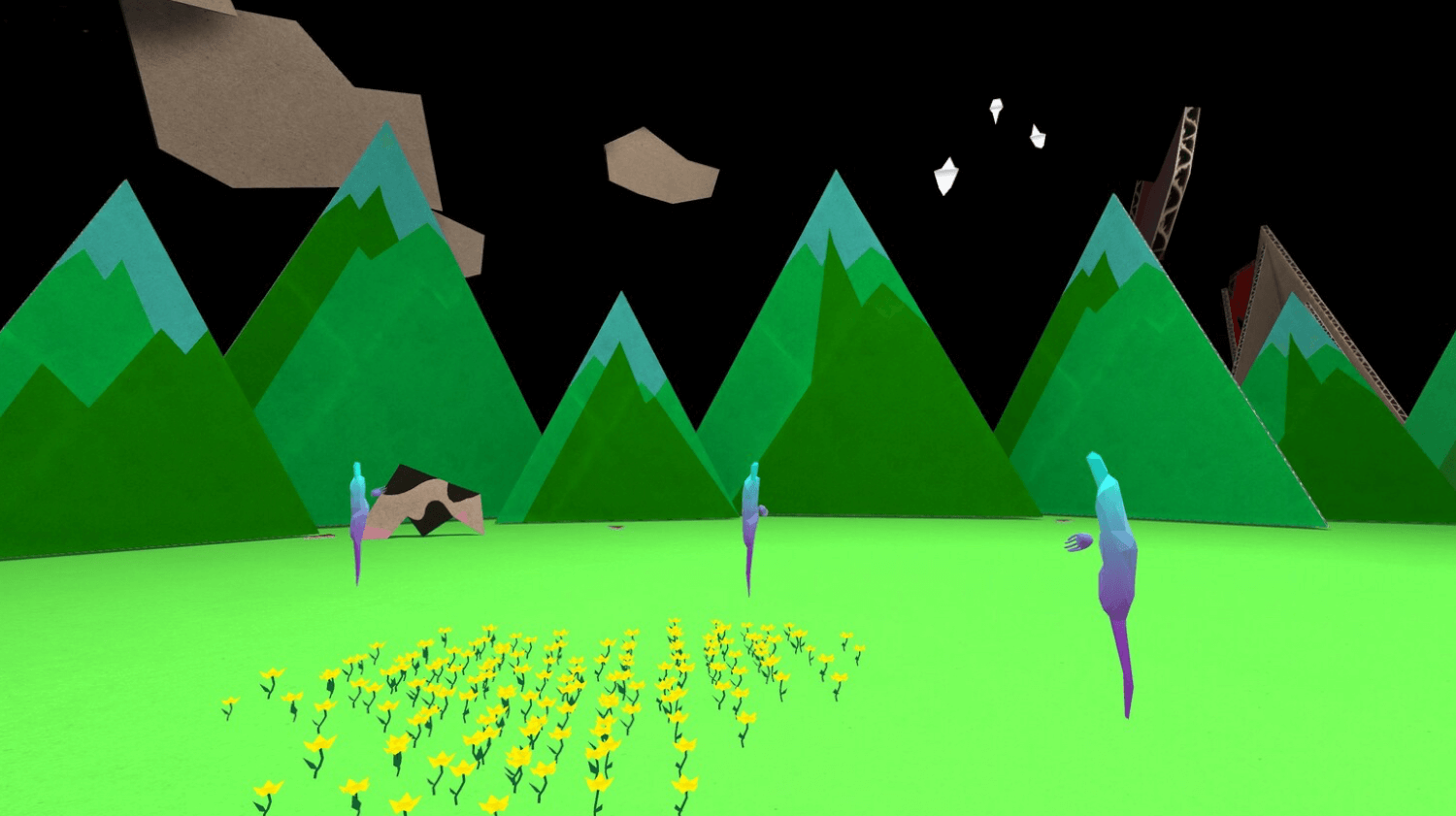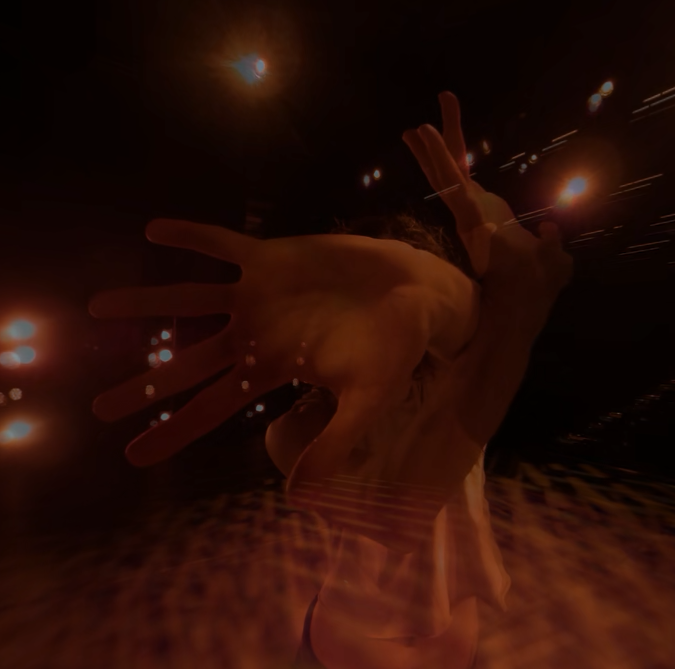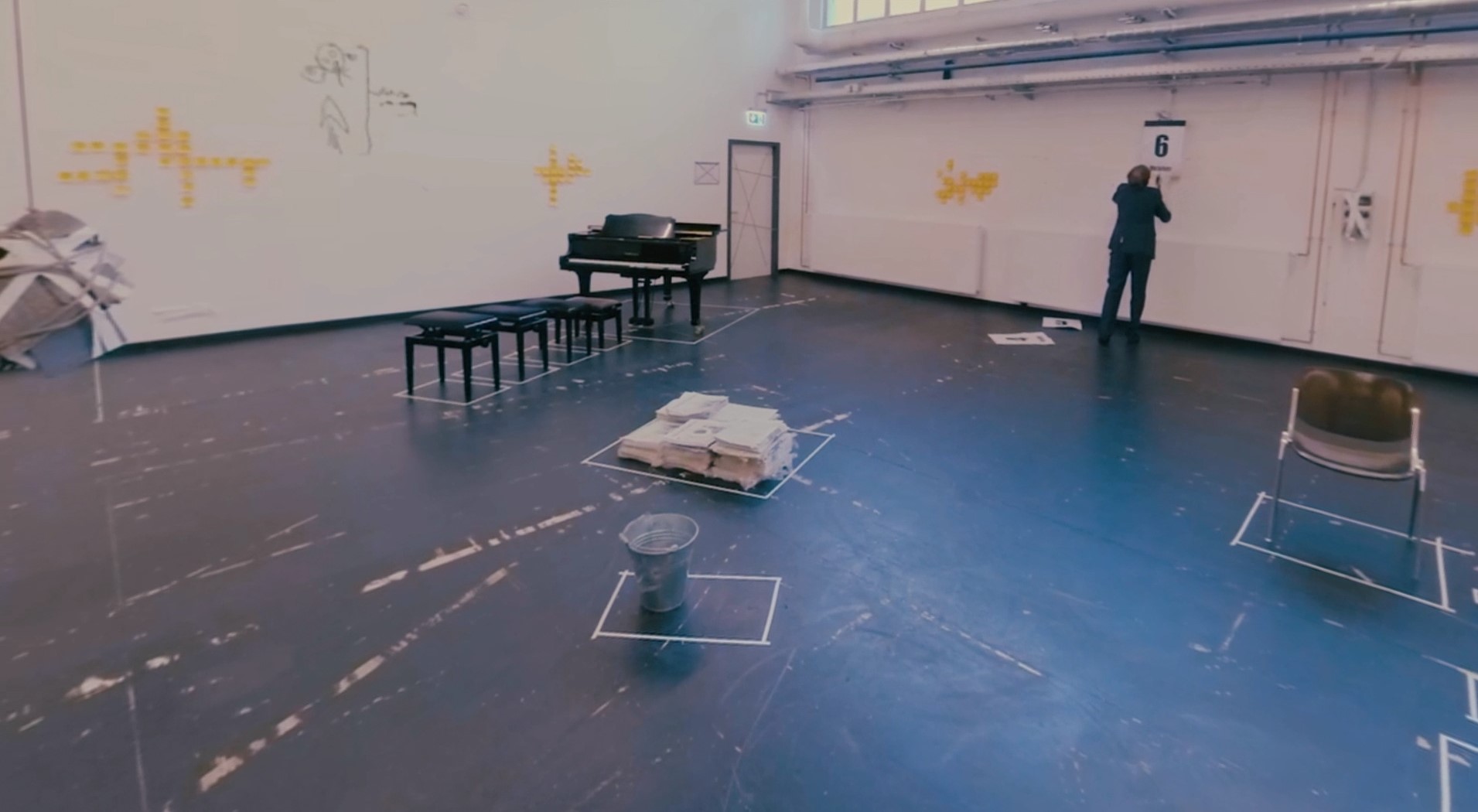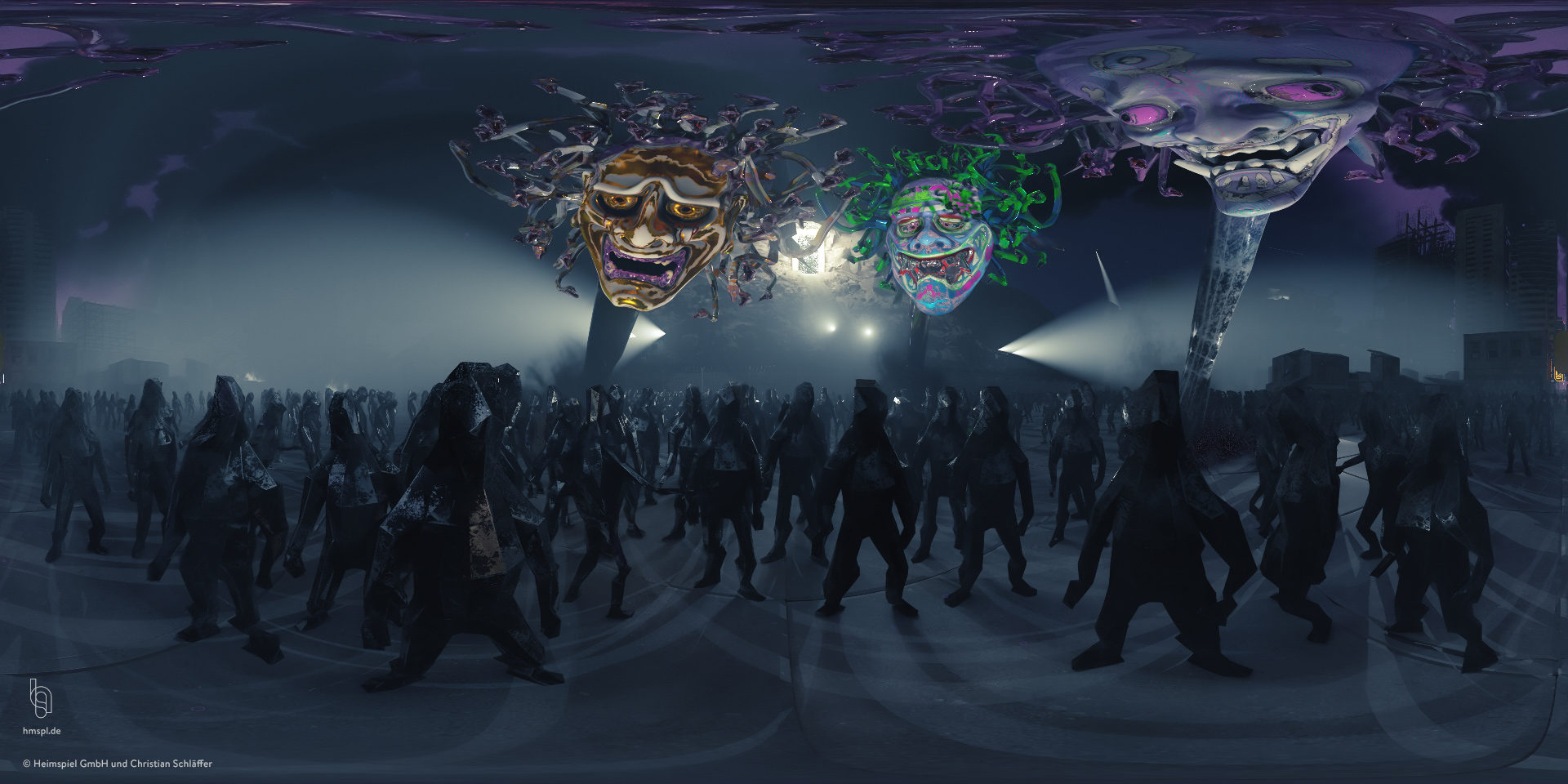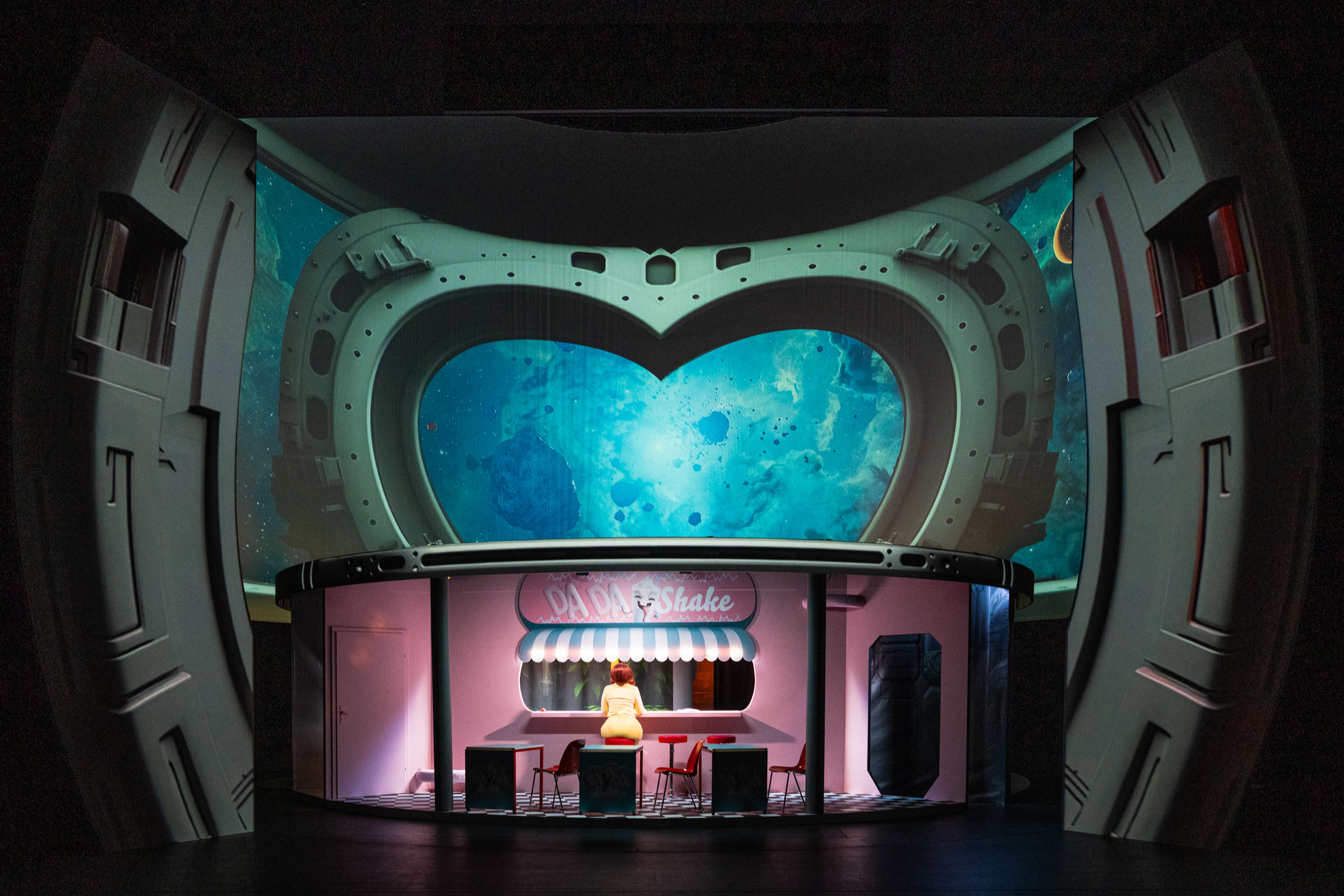What is it about?
In recent years, digitization has transformed nearly every aspect of life, reaching even into the realms of art. Particularly in the theater, a traditional art form rooted in the analog, the effects of digitization are palpable. Humans continuously shape new technologies, yet are simultaneously influenced by them. Technologies are tools that expand our senses, alter our perception, and influence our relationship with space and time, much like stories do. Theater is a space where stories are experimentally, freely, and imaginatively crafted. Therefore, it’s not surprising that new technologies have found their way into the theater and the arts. Equally unsurprising is that this space was one of the first to experiment with digital media. New staging possibilities and interactive behaviors among artists and between artists and the audience have emerged and will continue to do so. However, changes are not only felt on the stage.
With this project, I aim to investigate the extent to which classical theater has evolved through digitization in front of, on, and behind the stage, with the goal of enhancing or interactively expanding the holistic theater experience.
Key questions
Since my project theme is very open-ended, the research at the beginning will also be comprehensive. The goal is not to enter the topic with a predefined problem statement but to gain an overview of various theater areas and assess the potential of digital expansion and support for them. Three guiding questions with which I enter into the topic:
- How can accessibility in the theater be improved?
- What constitutes a meaningful expansion of classical theater productions through new technologies?
- Can digitization contribute to improving organizational efficiency in the theater?
Why I chose this topic
I simply love the theater. That is my motivation. Theater visits have been a constant part of my life since childhood. I find it fascinating to witness how productions evolve. Additionally, I regularly gain insight into the theater world through family and friends, stumbling upon certain issues that complicate work in the theater where it shouldn’t be, which I also experienced during my internship at the theater. In particular, I noticed that there is still room for improvement in internal communication.
I want to leverage the multidimensionality of the Master Interaction Design to delve into both experimental, artistic, and applied areas. What better environment for this than the theater?
My First Research
Performance
Digitization has opened up exciting possibilities in various theater technology domains to enhance and artistically expand the theatrical experience. Five key areas that can benefit from digital technologies in staging are lighting, sound, video, stage design, and direct interaction with the audience. In these areas, exciting technological developments have emerged, transforming the traditional theater world. Some of these technologies and concepts include:
Visual: AR and VR, 360° projections, holograms, projection mapping (for set design and costumes), motion capturing, touchscreens, smartphones
Technical: Various sensors, robotics for stage effects and movements, AI (ChatGPT for developing dialogues, stories, or characters), touchscreens, smartphones
Other Concepts: Live Foley effects, generative music, podcasts and audio dramas (derived from theater performances), live streaming, social media, game elements
While digital transformation revolutionizes theater, inevitable challenges arise when incorporating these technologies into staging. Take VR as an example. Since VR can induce dizziness and fatigue, integrating this medium into traditional theater poses a different challenge. Productions, such as a two-hour opera, could not be performed in this format. Significant cuts would be necessary, and the complexity of a story might not be fully realized. Moreover, VR is not yet designed for large audiences. Productions must be specifically developed for this medium, requiring elaborate onboarding for both the audience and artists to make the experience possible. It is conceivable that such limitations could create a creative barrier, as the full potential of what is possible with the technology may not be fully understood.
Guiding Questions:
- What technologies are already being used in traditional theater?
- What impact does the use of digital media in staging have on storytelling, artists, and live performance?
- How can authenticity and artistic integrity be preserved?
- To what extent is digital augmentation a meaningful addition to the performance?
Examples/Inspirations:
- The Tempest – Technology: Gesture and wrist sensors to influence light and audio
- Roots – Technology: Animation and projection mapping
- BMW – Technology: Holograms and dance performance
- Turandot – Media art/video works
- Dress Nr.13 – Technology: Robots
- Es Devlin – Immersive kinetic stage designs for theater and concerts
Accessibility
Accessibility in the theater is a crucial aspect to make performances accessible to a broader audience, regardless of physical or mental limitations and regardless of age. Existing regulations and technical measures, such as audio descriptions of stage design for the visually impaired, subtitles for the hearing impaired, wheelchair spaces, and plays in easy language, already lay a solid foundation. However, this has given rise to further questions:
- How can barrier-free design be further improved from the experience of the production to the design of websites and online ticketing systems?
- How can individuals with hearing impairments fully enjoy dance theater?
- Could the innovative translation of music into vibration make the theater experience even more captivating?
The theater is a place of international diversity, both on stage and behind the scenes, as well as in the audience. Usually, English is used as a working language to overcome language barriers. But what about the needs of the audience? In opera, there are translations of Latin or Italian texts into the local language. However, for non-native speakers, a multilingual translation of operas and plays could enrich the theater experience in other countries.
Theater Organization
How does digitization serve as a tool in theater organization?
As mentioned earlier, internal communication in some theaters still has room for improvement. Many pieces of information are still conveyed in cumbersome ways, either orally or in writing on paper, often leading to workflow delays. Additionally, numerous rehearsals and flexible shifts make maintaining an organized daily routine challenging, especially when unforeseen events such as illnesses occur just before a premiere. Tools like cross-workshop schedules or better internal and external networking could simplify organization and lead to a more structured engagement.
This approach would also be helpful in making the theater more sustainable. During a conversation with a set designer, two challenges on the side of set and costume designers became apparent:
- The reuse of costumes and set pieces or props in terms of sustainability, with the risk of other artists copying their work even if it is provided for sharing. Certain platforms and apps, such as an innovative digitization of the costume and material inventory, could lead to more structured engagement and, at the same time, a theater-wide resource-efficient exchange. A nationwide or even international exchange between theaters would be even better. Materials, props, or costume sets could be passed on as needed, similar to a swap meet, and adapted to the requirements of a play if they are not needed for a revival.
- The creation of stage designs that are hardly distinguishable from each other due to certain visual trends. Can closer networking of artists through a digital archive for theater productions help overcome this challenge?
Challenges
The use of new media in the context of theater and interactive performance is not a new concept and has its origins dating back a long time. Given the abundance of work in this area, I must set a boundary within which I navigate during the research. My focus will be on classical theater. However, I will also use examples outside this domain to explore the possibilities of digital performance enhancement. I am still faced with the decision of which of the three thematic areas (Staging, Theater Organization, Accessibility) I want to explore. So far, I will continue with broad research to gain an overview. What it will ultimately be, I do not know. I will let my interest guide me.
Next steps
- Analysis of interactive staging possibilities (specific technologies)
- Identification of potential areas for digitized workflows in the theater
- Research on existing solutions for accessibility in the theater
- Conversations with individuals working in the theater environment
- Development of possible problem statements or experimental approaches
- Further research to gain an overview of the implementation
- Attendance of theater productions with digital augmentation; the following plays are on my list:
Sonne Luft im Schauspielhaus Graz
Twitter Tiktok Theater 3.0
Relevant Institutions
Akademie für Theater und Digitalität
Netzwerk Regie
Resources

